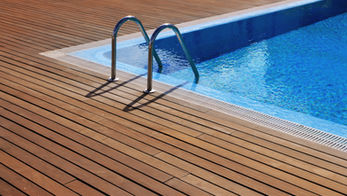
Pool Fencing
Ενημερωτικό φύλλο ασφαλείας #
21
Overview
Prevent your child's access to water at all times. Having barriers around water can slow kids down and give you more time to respond if you lose sight of them.
Restricting a child’s access to water can be done by placing a barrier between the child and the water. This can be done by placing a barrier around water, such as a pool fence with a self-closing and self-latching gate, closing the door to the bathroom after use, covering pools, spas and tanks, placing mesh on water features and fish ponds, and securely fastening lids on nappy buckets. Inflatable pools with a depth greater than 30cm also need to be fenced in accordance with State or Territory legislation.
If this is not possible, place a barrier around the child using a child safe play area. This can be used inside or outside the home and is especially effective for water that cannot be fenced, such as dams on farms.
It’s a great idea to do a thorough check of your pool fence before summer starts. Download our Home Pool Safety Checklist for tips on what to look for.
Related Items
Explore deeper into our campaign messages to learn more




